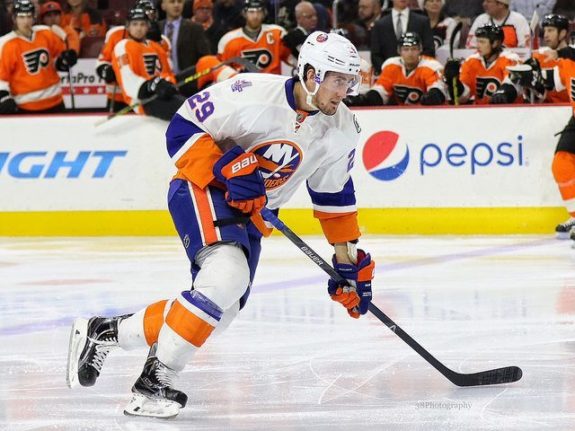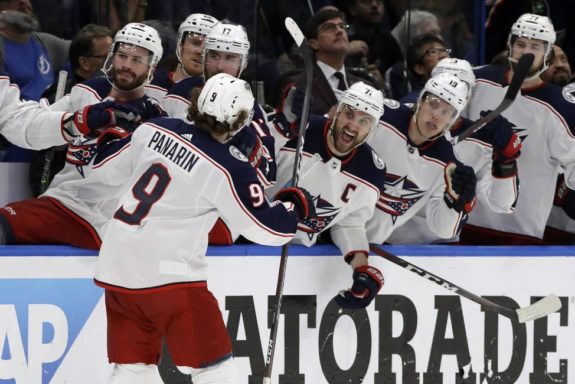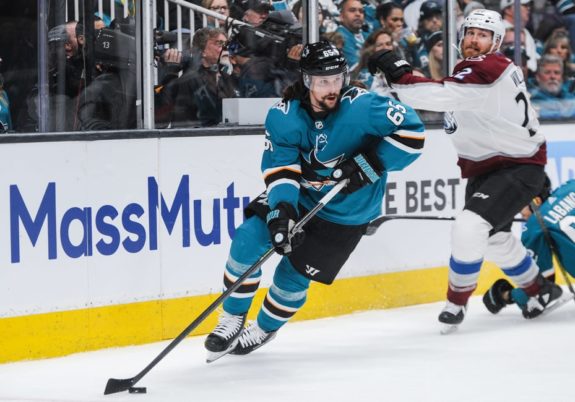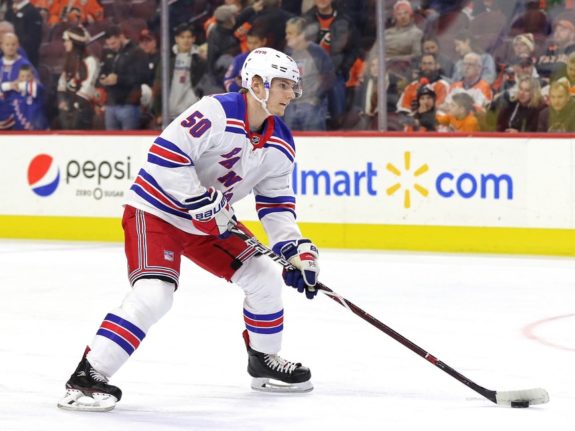Building draft assets is the easy part of a rebuild, but now comes the time for the New York Rangers to develop a contending roster lest they get stuck in a constant stream of mediocrity like the Edmonton Oilers’ rebuilding years. The Rangers will need to trek carefully with their precious cap room, but this offseason does seem primed for a rebuild accelerant.
If Artemi Panarin, Matt Duchene, Erik Karlsson or the many other free agents demand a costly contract, general manager Jeff Gorton could simply decide on patience as the Rangers begin to transition from rebuilder to contender. That’s not necessarily a bad thing despite the driving need for a superstar in New York.
Brock Nelson Set an Expensive Precedent
The New York Islanders failed to reign in John Tavares last offseason with an attractive enough contract. With Brock Nelson set to become an unrestricted free agent on July 1, the Islanders were prepared to give him fair market value instead of letting yet another top center walk in free agency.
Nelson inked a six-year, $36 million contract with the Islanders that included a no-trade clause through the first two years, then a modified NTC through the last four. It’s an expensive price to pay for a 27-year-old who just hit his career high of 53 points this season with below average possession numbers.

However, reports emerged that Nelson had interest from numerous teams that pinned him worth around $7-7.5 million a year. The Isles may have overpaid to retain their top-six center, but it sets an expensive precedent for the New York Rangers as they explore their options in free agency.
Artemi Panarin’s Contract Is Slated to Be Over $10 million AAV
A center’s market value trends toward the expensive side when compared to wingers, but we can still use the past few signings to gauge what Panarin will command in free agency.
Let’s consider Nelson’s set market value of $7 million and Mark Stone’s recent contract of $9.5 million over eight years with the Vegas Golden Knights. Both float around the 50-60 point mark with Stone having a far better point-per-game average through his career. Additionally, they were both 27 when they signed their latest contracts, just as Panarin will be on July 1.

Both Stone and Panarin float around a point-per-game average through their careers, with the latter of the two having a slight edge especially in 2018-19. If Gorton and newly-appointed president, John Davidson, want to make a splash in free agency, they’ll have to pay a hefty price that reaches into eight figures for AAV. A rebuilding organization committing to a contract of that caliber may not be the direction that Gorton or Davidson want.
Davidson’s previous history with the Columbus Blue Jackets has fueled speculations of Panarin to New York. The recent market trends along with the continuing reports of Panarin to the Florida Panthers have made for a more confusing free agent environment for the Rangers. The Panthers have the ability to pay well over $10 million a year for Panarin, but the same can’t necessarily be said for the Rangers.
A Costly Contract to an Aging Star Would Decelerate the Rebuild
In days of Rangers past, fans could look towards the offseason or trades to build a Stanley Cup caliber team. That’s essentially how the Rangers became contenders during their many playoff runs of the early 2010s. Their defense and center depth have taken quite the tumble since those days, and it’s easy to believe a quick fix like Karlsson or Duchene would be the solution to all roster holes.

Duchene will likely command upwards of the reported $8-9 million cap hit the Ottawa Senators were willing to give him prior to the trade deadline. Rumors of Karlsson and the Rangers won’t seem to go away, despite his injury woes and likely max contract price. Both players would certainly upgrade the Rangers’ roster as it stands, but it’d likely send the rebuild a few steps back.
The combination of fortune and Gorton’s dealings have built a strong, young roster that will only get better following the 2019 Entry Draft. However, the Rangers still don’t know what they have in many of those younger players. Lias Andersson has yet to develop into a full-time roster player while Filip Chytil has been inconsistent on both sides of the puck.

Committing a massive contract to a free agent who may perform in their prime for the next three to four years is jumping the gun before the Rangers’ front office even know if they can develop into a contending franchise. This year’s free agent market is slated to be expensive as ever despite the lack of talent across the board. The Rangers, by no means, are in a position where they need to make a free agent splash.
The $19 million of project cap space should be used to retain the young talent they already possess, such as Pavel Buchnevich or Anthony DeAngelo. The 2020 Rangers’ offseason is already slated to have at least eight free agents, including Chris Kreider and Alexander Georgiev. This offseason doesn’t have to be the accelerant that brings the Rangers back to playoff contention, but rather a time to reflect on the assets built and how they develop before spending on a big name free agent.